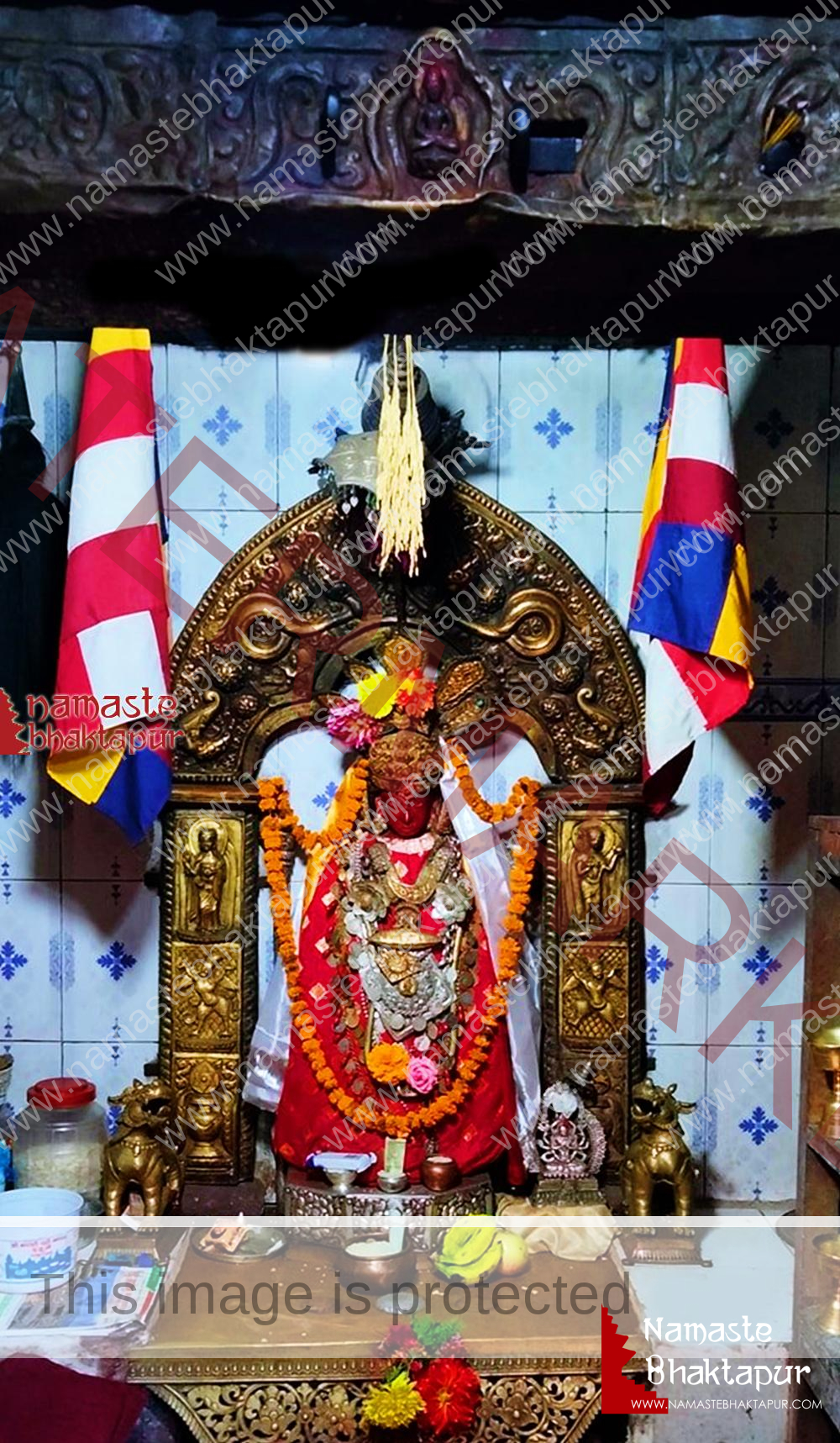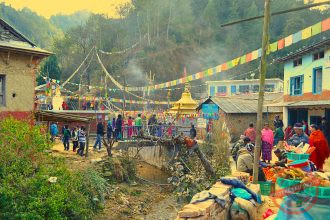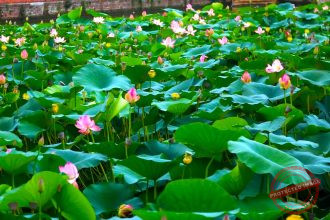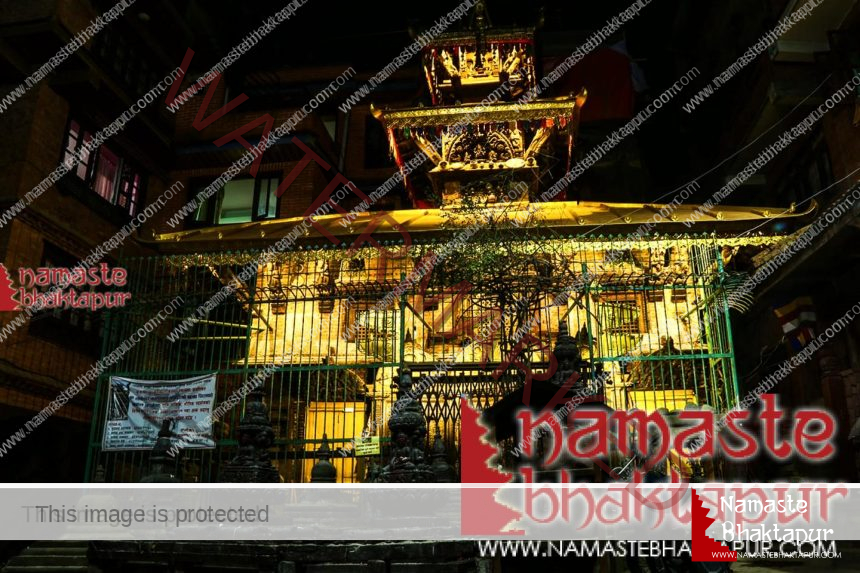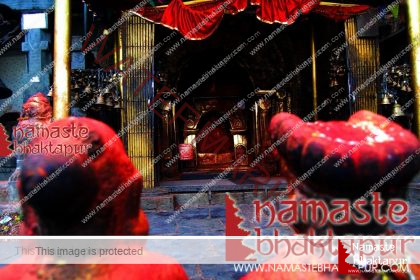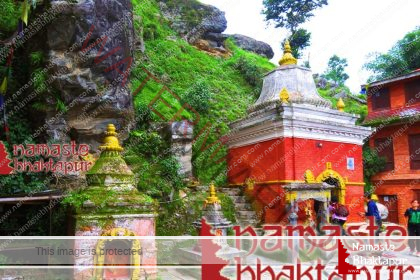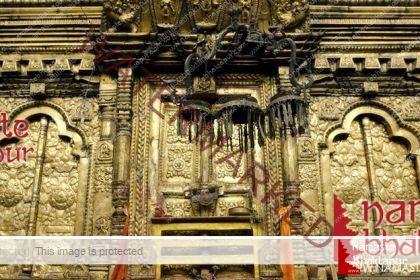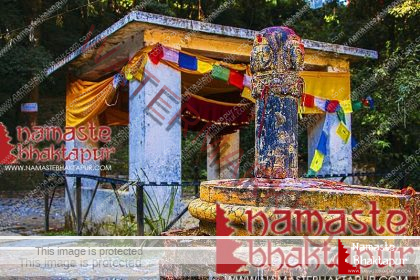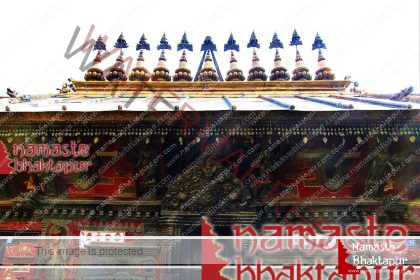Itachhen Tole is home to Lokeswor Mahavihar or Laskadyo Baha. The Bhaktapur Shrine of Machindranath also known as the Machindranath Shrine, is a two-story structure with a roof capped by two smaller roofs, the lower of which is tiled and the upper of which is gilded copper. The top section is adorned with a golden pinnacle “Gajur”styled like a chaitya. The temple, Kwapa dyo, is depicted in the shape of Padampani Lokeswor and is revered by the locals as Loknath. It dates back to the 17th century A.D. In front of the temple, there are several chaityas and mandalas. Despite the fact that Bhaktapur has a significantly higher proportion of Hindus in its population, the number of Buddhist vihars and shrines does not diminish. Perhaps it is Nepal’s religious tolerance, which is practiced by both faiths, that fosters societal cohesion, as people feel free to express their devotion to both religions.
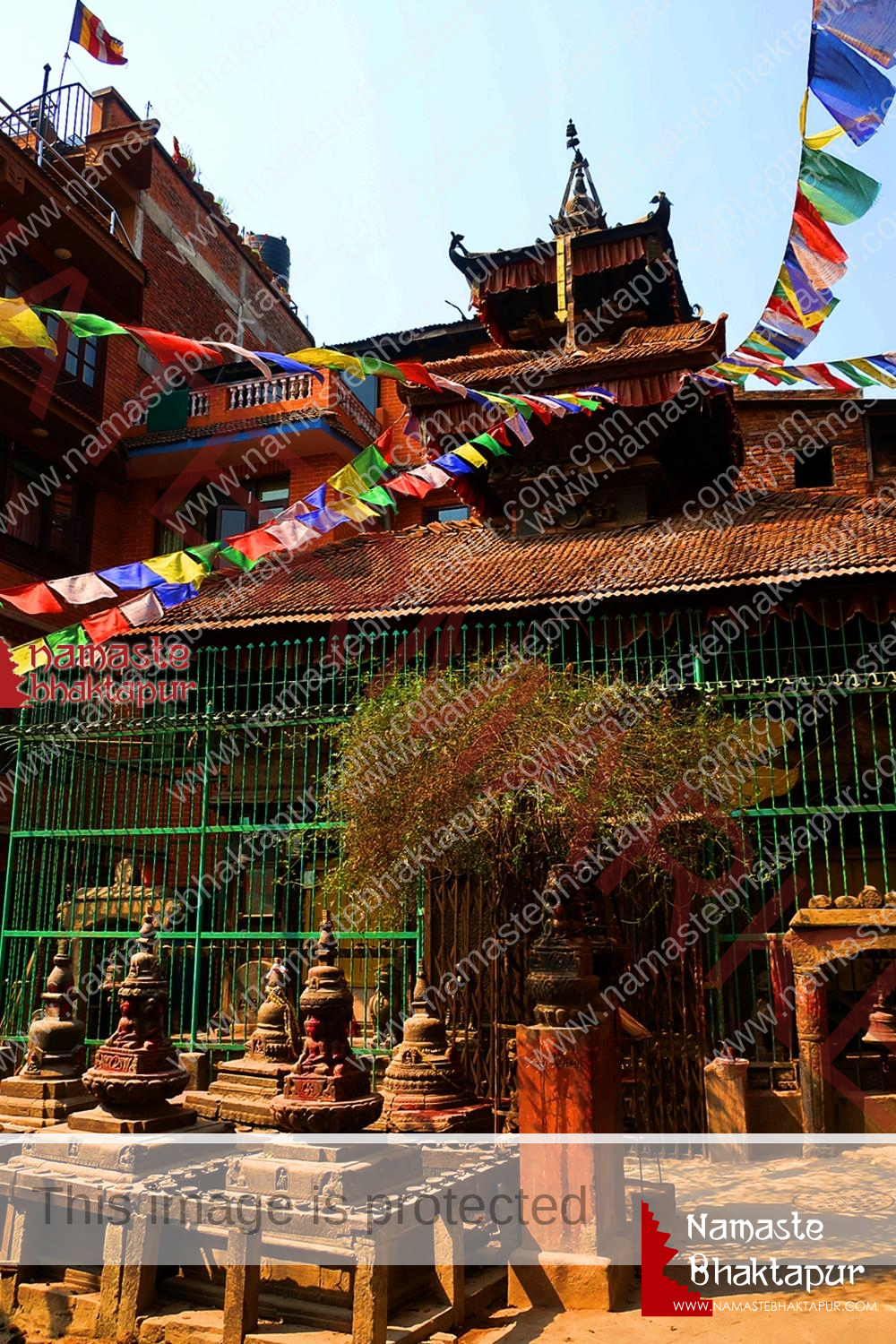
“Vajrayana (esoteric) Buddhism in the Kathmandu Valley has its particular qualities, which could be closely related with certain aspects of Hinduism. there has been a tendency in scholarship to interpret,” according to Lain Singh Bangdel, a leading authority on Nepalese art. Newar Buddhism is defined as Hinduism’s dominance, deliberate syncretism, or Hinduism in all but name. The major concentration of Buddhism remained quite active.” In a sense, Bhaktapur’s vihars have become an intrinsic part of the cityscape, where the Newars, regardless of their beliefs, hold both Buddhism and Hinduism in high regard.
